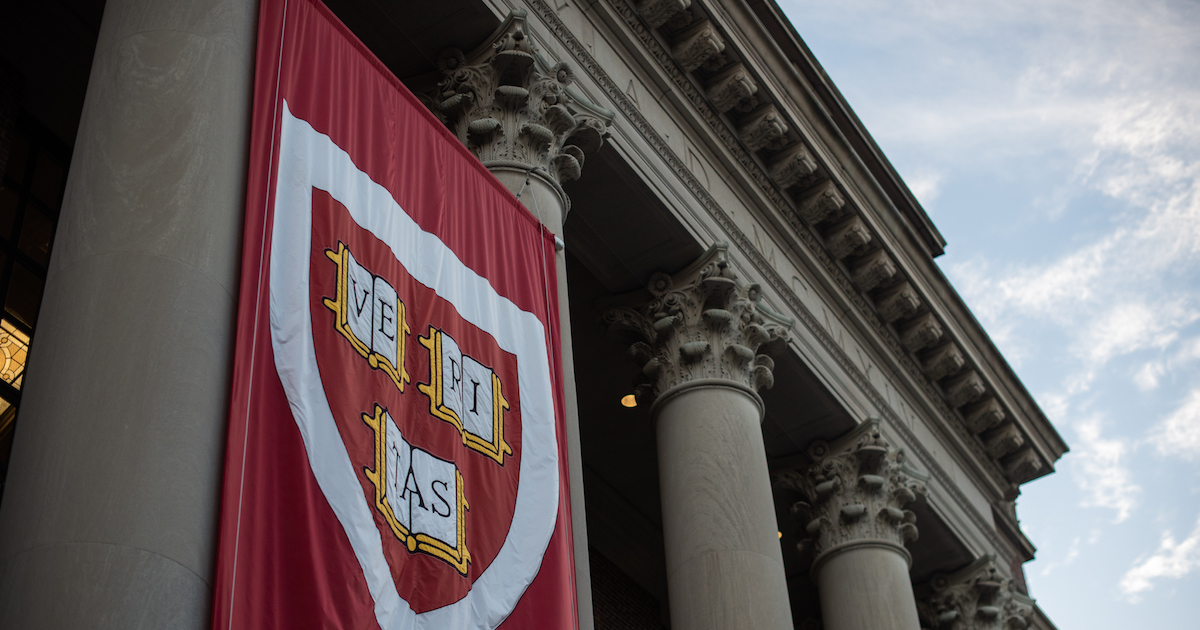Why the rolled eyes and contempt for making DEI a top priority
DEI = Division, Exclusion, Indoctrination
Why the rolled eyes and contempt for making DEI a top priority
There's a comedian named George Wallace who has segments in his routine that he starts with "If I was in charge, ...." In that spirit here's what my priorities would be "If I was in charge" at PSU.
Everything else would be secondary. Other areas like sports and research are fine but they should be self funding and have no impact on the cost for 40,000+ students to obtain their degrees. DEI is nice but it shouldn't distract from the primary mission.
- Offer best in class education in areas such as business, law, healthcare, and computer science.
- Do so at the lowest possible cost to students.
Barry --
- Foster diversity, equity, inclusion and belonging --
My neighbor here in Naples, David Kleppinger BOT member ([email protected]), was enthusiastic and effusive in his summation of Nelli's capabilities for the heralded position of Pres. of Penn State. YET - we now have a topic for research and discussion that is only to be heart-warming for a very select 'few'.......
No matter where the evaluation is made -- within a family, high school, Big Ten, AAU, National and International polls and/or Rankings -- the ONLY valued circumstance is - Performance - ! Any other condition of operation/s or social activity is for internal use, and not 'dirty laundry' for external publication. And not interfere with the core goals of a student's educational foundation and future success after graduation.
DEI and B has no use in educational excellence for any student - no matter how different !
IF .... this is a pet project of Nelli ..... she has outlived her usefulness and MUST be fired for cause immediately. Penn State deserves better, much better.
"The strength of our country will not be in the inclusion of people – it will be the Principles we keep, not the imaginary ideas and whims of those who will bend over backwards to please……"
What’s odd is that you can think that any not-for-profit can be successful without having revenues in excess of expenses. That is a priority for any well run organization.
Without those revenues there is nothing available to maintain facilities, invest in equipment, compensate staff, and undertake expanded operations.
The best CEOs of not-for-profit organizations generate revenues over expenses, operate fiscally sound organizations and are compensated very well.
I have sat on the Boards of two not-for-profits. Every Board meeting began with an overview of the financials, matching budgets with year to date operations, looking for changes in our fiscal assumptions and adjusting our operations accordingly.
When the goal of a public university should be to provide an affordable quality education it astounds me that Penn State does not make that THE priority.
You asked earlier “what is just”. Easy. Just is doing our best to provide that people in our society receive the benefits they have earned. Creating programs to dish out benefits to those who have not earned them, at the loss to the people who have, are unjust.
I don’t care if the classes at universities having science, math, and professional schools are disproportionally filled by students with ethnic Jewish, Indian, Korean, Vietnamese and Chinese backgrounds, if they earned those positions. I do care if ethnic Europeans, African, or Hispanic students get those spots based upon a wrong headed programs selective treatment, and not thru achievement.
Call me old fashioned.

Do you have the data that shows number of applicants by race, number accepted into the institution by race, and number who accepted admission by race? Any other numbers are meaningless without these details.We disagree. Who said placement at institutions of higher should only be about achievement? Schools should be able to build out their student body using any metric they want if they find that doing so enriches their campus and community. The difference in achievement (academic or otherwise) for students applying to Harvard and other elite schools is negligible at best regardless of ethnicity, gender, or socioeconomic status. They could easily take another 5,000 students with similar GPAs and standardized test scores if they wanted. But, they’re allowed to provide preference to legacies (who make up about 10% of their student body) and donors but not ethnicity or gender? Even with AA preference African Americans made up less than 7% of Harvard’s student body.
A friend of mine applied to every elite law school in the US and was accepted to all but UChicago. He went to Harvard. Who knows why, but it's because for whatever reason, he didn't make the cut for whatever diverse student body Chicago wanted. Should he sue them? Clearly, if good enough to get in every top law school in the country, there must be some kind of discrimination going on.
Will be interesting to see what happens with the situation at Thomas Jefferson High School for Science and Technology given they recently changed their admissions process from an exam to a written essay. As a result, African-American enrollment went from 1 to 6%, and Asian enrollment fell from 73 to 54%. Guess who is suing?

High School Did Not Discriminate Against Asian American Students, Court Rules
Parents had objected to Thomas Jefferson High School in Virginia changing its admissions policies, including getting rid of an exam. The case appears headed for the Supreme Court.www.nytimes.com
Do you have the data that shows number of applicants by race, number accepted into the institution by race, and number who accepted admission by race? Any other numbers are meaningless without these details.
You're able to sue if you have money to hire a lawyer, and the Asian students lost their lawsuit but still had to pay for the lawyer. Unless you know the percentage accepted by race you really can't say much other than the percentage by race of the incoming student body. The best example is Native Americans are typically stated as <1% of the student body for most schools yet I suspect the Native American acceptance rate is >>>50%, probably darn near 100%. But people like you will stand around and say we don't have enough Native Americans in our school.Does anyone outside of Harvard have this data? If meaningless, how in the world were Asian students able to sue for discrimination? Do they have this data?
You're able to sue if you have money to hire a lawyer, and the Asian students lost their lawsuit but still had to pay for the lawyer. Unless you know the percentage accepted by race you really can't say much other than the percentage by race of the incoming student body. The best example is Native Americans are typically stated as <1% of the student body for most schools yet I suspect the Native American acceptance rate is >>>50%, probably darn near 100%. But people like you will stand around and say we don't have enough Native Americans in our school.
A state flagship university which only educates white suburban straight Christian students isn’t fulfilling its mission.
well, they got something rightI still remember comments on a rutgres message board after the 2015 football game at PSU that University Park was “white bread”.
I still remember comments on a rutgres message board after the 2015 football game at PSU that University Park was “white bread”.

You should check your numbers. Also, Asia is a big land area and includes India, Pakistan, etc. Here's a link. First number up is Native Americans listed as <1%. As always, the category "non US citizens" is nebulous.I think you're on the right track if your study body is representative (or close to) the ethnic make-up of our country. To your example, Native Americans make up about 2.9% of the US population. Enrollment percentage at Harvard? 2.9%. Asians make up about 7% of the US population but but are about 28% of Harvard's student body.

Not a huge fan myself, but I do really enjoy all of the over-reactions from the thin of skin.Foster diversity, equity, inclusion and belonging
I have to throw-up now.
You should check your numbers. Also, Asia is a big land area and includes India, Pakistan, etc. Here's a link. First number up is Native Americans listed as <1%. As always, the category "non US citizens" is nebulous.

Harvard College Campus Life - BigFuture College Search
Harvard College is in an urban setting and has 6,979 undergraduate students. Campus housing costs an average of $22,130 a year. Harvard College competes in Club, Intercollegiate, Intramural, NCAA Division I and NCAA Division IAA sports.bigfuture.collegeboard.org

Mine are from the current admissions class (and from Harvard's website):

Admissions Statistics
Harvard welcomes students from across the country and all over the world, with diverse backgrounds and far-ranging talents and interests.college.harvard.edu
Anything about academics?See the link below. From the article:
”UNIVERSITY PARK, Pa. — Workgroups have been formed to advance each of the five key goals that Penn State President Neeli Bendapudi has identified for the University to work toward over the next five academic years. Efforts across each goal and from each workgroup will also contribute to a larger planning process — in which the broader University community will participate — to develop Penn State’s next strategic plan beginning this fall.
More than 80 individuals representing a broad cross-section of institutional perspectives and experiences were selected to serve on the workgroups by members of the President’s Council who are leading progress toward each of the five goals, which are to:
- Enhance student success
- Grow interdisciplinary research excellence
- Increase land-grant impact
- Foster diversity, equity, inclusion and belonging
- Transform Penn State’s internal operations
I do like the structure adopted by the University of Texas. If you graduate at the top of your class (I forget the precise percentage rank) in ANY high school in Texas, you are guaranteed admission to the University.Not only do you have to look at acceptance rates, but you also have to look at the numbers of applicants from different minorities. If minorities are not applying to your school because they are unwelcome there, you have a problem, irrespective of whether or not they would be accepted if they had applied.
As an addendum with some data.Higher Education is broken in Pennsylvania because of structural problems in the original design and the continued inability to address those issues. Various people can get on their hobby horses and tilt at the windmills of their choice, but the basic problems are two:
1. Increased regulation and costs are being applied over a declining pool of 18 year olds. Whenever you have required costs increasing and a shrinking customer base, you have a bad business.
2. Pennsylvania has a surplus of state schools of every variety. Too many branch campuses, main campuses, and state schools. They were built up over the decades and now we cannot reduce them fast enough.
There are two outcomes that are possible:
1. A rational political process would cut and close overlapping programs with reductions to every institution.(Does anyone think our state government could manage such a process?)
2. A slow decline will occur across all member institutions, with campuses gradually withering away over decades of weakening attendance and maintenance, along with faculty and union retirements.
Option #2 is currently being played out as we speak and it will meander along its dispiriting path until supply and demand are balanced.
All the rest of the talk about various interest groups and their demands on this leaking ship are entertaining diversions.
“Take care of the little things, and the big things take care of themselves.
“
The first 4 points are increasing the deliverables externally; the last one is decreasing cost/improving efficienc. Trying to affect both nUmerator and denominator of the value fraction.
- Transform Penn State’s internal operations”
DEIB agile team leads share updates on plans, progress
Efforts underway to enhance the bias reporting approach and develop student resource ‘hub’; Special Adviser for Institutional Equity report recommendations shared
”UNIVERSITY PARK, Pa. — In April, Penn State President Neeli Bendapudi shared four key actions for the University to take to enhance equity and belonging for students, faculty, staff and the broader Penn State community. These actions support Bendapudi’s goals related to diversity, equity, inclusion and belonging (DEIB), and are in alignment with some of the key recommendations that Dr. Jennifer Hamer, special adviser for institutional equity, shared as part of her evaluation of DEIB-related programs and activities across the University.
Bendapudi named four members from her senior leadership team — to collaborate with equity-focused partners at the University — to lead agile teams to advance each of the four equity-enhancing initiatives. The teams have begun their work and are each moving forward on individual timelines with a shared goal to make progress this upcoming academic year.”
I would love to know how much all this marbles-in-mouth talk is costing the university.

The circle jerk just gets bigger.DEIB agile team leads share updates on plans, progress
Efforts underway to enhance the bias reporting approach and develop student resource ‘hub’; Special Adviser for Institutional Equity report recommendations shared
”UNIVERSITY PARK, Pa. — In April, Penn State President Neeli Bendapudi shared four key actions for the University to take to enhance equity and belonging for students, faculty, staff and the broader Penn State community. These actions support Bendapudi’s goals related to diversity, equity, inclusion and belonging (DEIB), and are in alignment with some of the key recommendations that Dr. Jennifer Hamer, special adviser for institutional equity, shared as part of her evaluation of DEIB-related programs and activities across the University.
Bendapudi named four members from her senior leadership team — to collaborate with equity-focused partners at the University — to lead agile teams to advance each of the four equity-enhancing initiatives. The teams have begun their work and are each moving forward on individual timelines with a shared goal to make progress this upcoming academic year.”
I would love to know how much all this marbles-in-mouth talk is costing the university.
The circle jerk just gets bigger.
Gotta' spend money to spend money.You aren‘t the least bit intrigued by “collaborate with equity-focused partners”?
It should be no surprise to anyone. That’s why Neeli was hired. PSU is charged by the BOT to become more diverse and it’s part of her mandate to increase hiring of minority faculty and attract a more diverse student population.
It should be no surprise to anyone. That’s why Neeli was hired. PSU is charged by the BOT to become more diverse and its part of her mandate to increase hiring of minority faculty and attract a more diverse student population.
That's a big ask on a public forum.Is Neeli pushing DEIB.on her own? It was a big part of the job description when she was hired. Are any of the trustees into it?
That's a big ask on a public forum.